How to Grow Kale for Beginners
If you are looking for tips on How to Grow Kale for Beginners this guide will give you just about everything you need. From how to plant all the way to harvest get your action to-do list for Gardening 101.
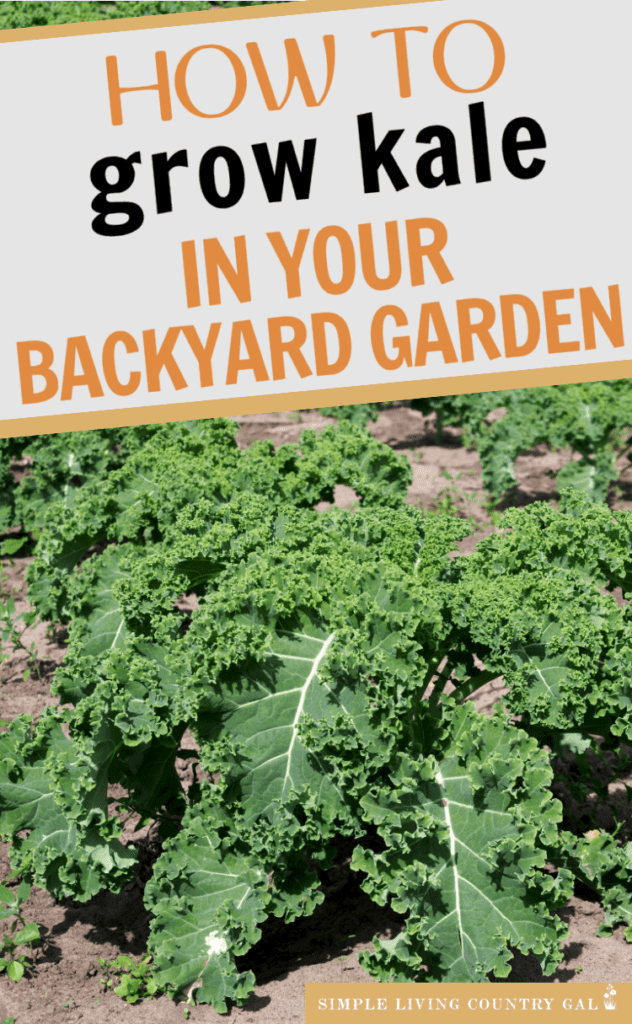
Many kale growing guides will tell you that kale is a cold weather crop that tastes best after a frost as growing it in cold weather gives kale a slightly better taste. While this is true, you can really grow kale in any season and in most climates. And since it’s easy to grow, it’s perfect for beginner gardeners.
Kale is also perfect for smaller gardens since it can easily be grown in raised beds or containers.
The flavor and grow time will change throughout the seasons depending on temperatures, weather patterns, and soil conditions but it’s a hearty crop that will adapt to a variety of conditions. It will tolerate temperatures as low as 20° but will start to turn bitter and tough in temperatures above 80°.
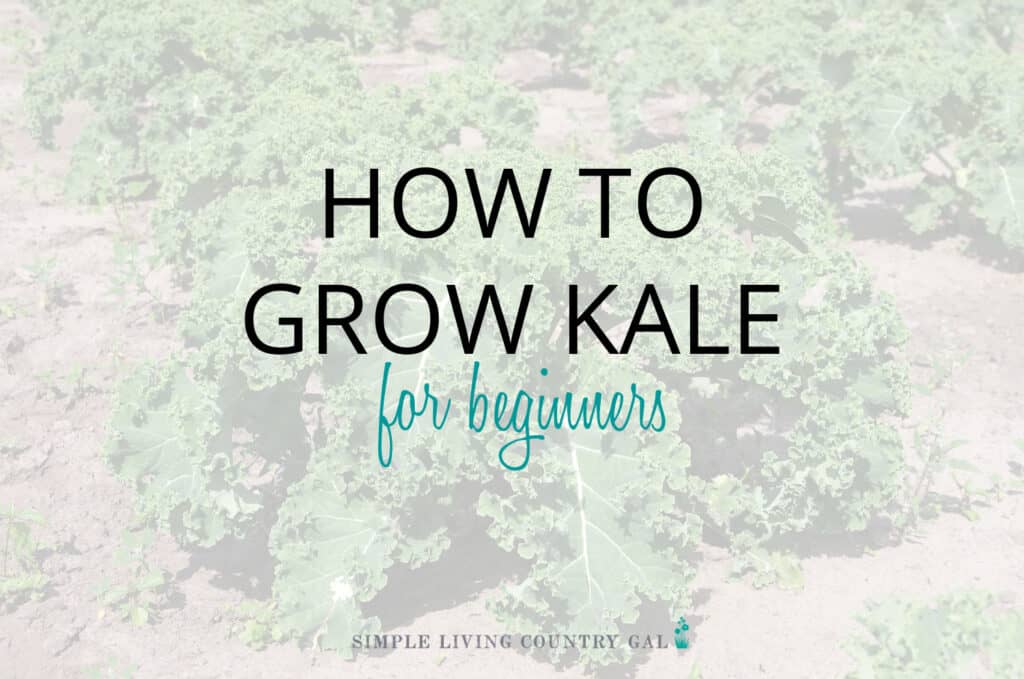
There are 5 main types of kale to choose from based on the type of leaf including:
· Plain leaved
· Rape Kale
· Curly leaved (Scots Kale)
· Cavolo nero (black cabbage, Tuscan Cabbage, or Kale)
· Leaf and spear (a hybrid of curly and plain leaved Kale)
These various types come in several varieties including:
· Blue Armor (45-70 days, hybrid)
· Blue Curled Scotch (65 days)
· Dwarf Blue Curled and Dwarf Blue Scotch (55 days)
· Dwarf Green Curled (60 days)
· Dwarf Siberian (65 days)
· Greenpeace (65 days)
· Red Russian (40-55 days)
· Squire (60 days)
· Winterbor (60-65 days, hybrid)
What You Need to Grow Kale
Kale does require significant spacing, about 18 – 24 inches between plants, full sun, and well-draining, fertile soil with a pH of 6.5 to 6.8. You may also want to consider regularly feeding it with continuous-release plant food to help it thrive.
When to Plant Kale
Kale does become more flavorful after a frost so cold weather planting is optimal, but it can be planted all year long in the right temperature. If you live in a warmer zone where you receive high heat days throughout the summer, you’ll want to plant in fall, winter, and early spring. But, if you’re temperatures don’t rise about 80°, you can plant all year long with a continuous harvest.
Most kale varieties are ready to harvest in 50 – 65 days so, as long as you don’t expect high heat days, you can plant almost any time.
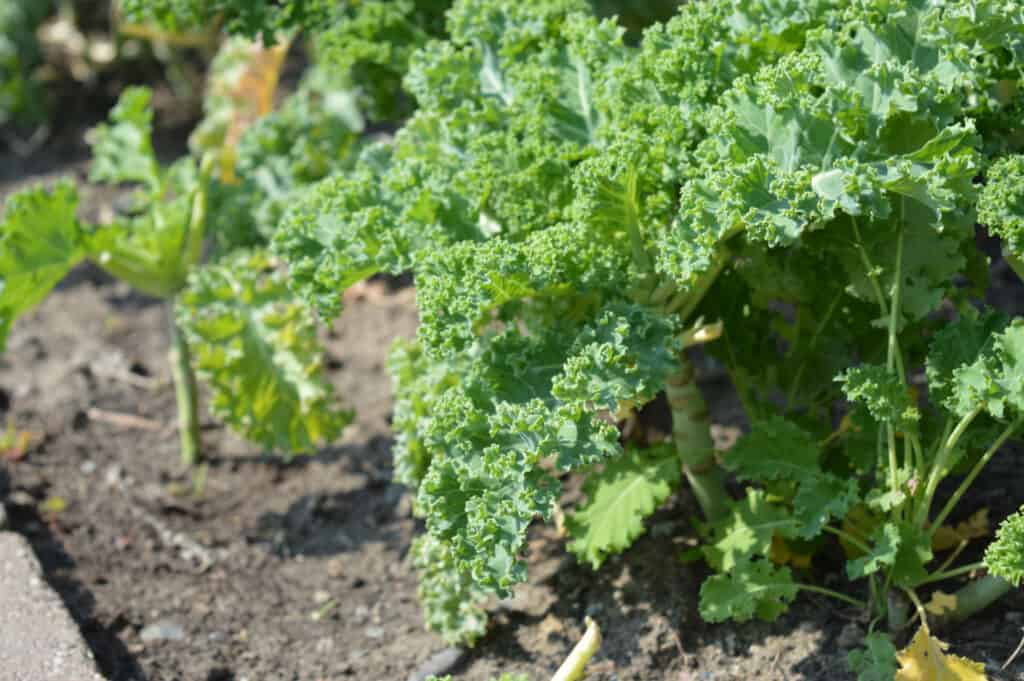
How to Plant Kale
When you’re ready to plant, choose a location that receives full sun, especially in the cooler season when the days are shorter. If you’re planting in a warmer climate when the days are longer, choose a location that receives some partial shade or isn’t in direct light all day. Too much sun and heat can produce a poor tasting crop. You will also need to check your soil before planting. Kale prefers less acidic soil with a pH between 5.5 and 6.8. You’ll also need to make sure your soil is loamy and well-draining.
Lastly, consider temperatures before planting. The seeds will germinate best when the soil is around 70°. You can start them indoors if you’d like, about 5 to 7 weeks before the last frost. If you’re going to direct sow the seeds, do so about 2 to 4 weeks before the last frost or anytime at least 10 weeks before the first frost of the next season. Regardless of the season when you plant, soil temperatures will need to be at 40° or above for germination.
If you’re starting the seeds indoors, sow them in small pots filled with a mix of soil and compost. Place the seeds about ½” deep and keep the soil moist throughout it’s growth but allow the top layer of soil to dry between watering.
If sowing directly in your garden, start 2 to 4 weeks before the last frost or as soon as the ground can be worked.
For either planting method, start more seeds than you think you’ll need in case some don’t sprout. You can always thin them out later.
Place seeds or seedlings in the ground about a ½” deep and 12 to 18” apart in rows that are 18 to 36” apart. If planting seeds, you can plant 3 to 4 seeds per every 12 to 18” then thin them out to a single plant once they sprout.
If planting seedlings, make sure you don’t plant them any deeper than their first leaves.
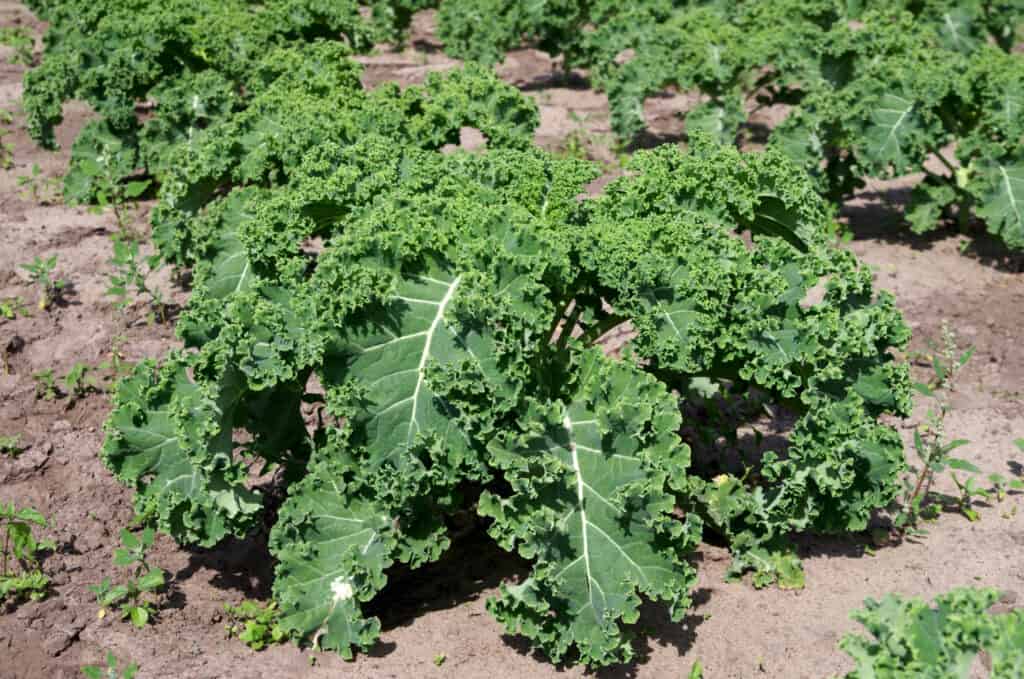
How Many Plants to Plant
Depending on how often you plan to eat it, you should plant anywhere from 3 to 5 plants per person in your family.
How Long Does Kale Take to Grow?
Most kale varieties are ready to harvest in 50 – 65 days, some are faster and others are a little slower. Check the grow guide on the seed packet for the variety you are planting.
Temperature
Kale will thrive in temperatures as low as 20° and even enjoy the cold. It develops a bit more flavor in colder temperatures but you can grow a quality harvest in temperatures up to 80°.
Sun
Kale needs direct sunlight and plenty of it, at least 6 hours per day, but 8 is ideal. Plants that receive less than 6 hours a day will not be as full and leafy, but will still be tasty.
Soil
Kale does best in loamy, well-drained, moist soil that doesn’t get soggy. It doesn’t really need, or enjoy, soil that is too rich in nitrogen. It prefers a lower pH than most vegetables, between 5.5 and 6.8. If your soil is too acidic, add some wood ash to sweeten it. Light, sandy soil or very heavy clay soil will have a negative affect on the flavor of the kale, but it can still grow in these conditions.
Water
Kale grows quickly so you’ll want to keep the soil moist. 1 to 1 ½” of water each week is recommended. Let the top layer of soil dry between watering.
Fertilizing
Before planting, work some organic fertilizer into the soil. You may find that you need to work the fertilizer in then cover the bed and allow it to rest for a week or two before planting, depending on how potent it is.
If you’re using seasoned compost to fertilize, the ground will be ready to plant the next day. Regularly feeding the plants with continuous-release plant food will help them thrive.
Spacing
Plant kale plants 12 to 18” apart in rows that are 18 to 36” apart. If planting directly in the ground, sow 3 to 4 seeds for every 12 to 18” in case some don’t sprout then thin to 1 plant per group once the sprout.
Depth
Whether you’re starting your seeds indoors or sowing directly in the ground, plant kale seeds about ½” deep.
Growing Tips for Kale
· Kale enjoys the benefits of companion planting. It especially likes to be planted near beets, celery, herbs, onions, and potatoes. Avoid planting near strawberries, tomatoes, and beans.
· The hotter the weather, the more bitter and tough the kale will be. It’s still nutritious and will work well in most dishes, but probably won’t be as enjoyable when eaten raw.
· Mulching around the plants will help the soil retain water, keep some pests away, and help to fertilize the soil.
· Keep the plants well-watered, kale enjoys moist soil. It will also help to keep the leaves sweet and crisp.
· Place a side dressing (fertilizing along the rows) of compost throughout the growing season about every 6 to 8 weeks. It will keep the kale producing.
· If you’re having a problem with dirt sticking to the leaves and rotting them, place mulch, straw, or grass around the kale once it’s at least 6” high.
· Kale grows well in-ground, in raised beds, and in containers. Raised beds are a good option if your ground soil needs a lot of added nutrients or the pH level is too high. Containers are a great option for small garden areas.
· If you’d like to grow kale year-round, an indoor, water-based growing system will work well.
· Harvest kale with the lower, outermost leaves once they reach the ideal color and are large enough to enjoy.
· Leaves will reach their peak flavor after a light frost.
· Plants receiving less than 6 hours of sun a day will not be as stocky or leafy as plants that get more sunlight. But they will still be edible.
· Kale planted in late summer or early fall may wilt a bit through hot weather but when temperatures drop the plants will reinvigorate and quickly multiply in size.
· When harvesting, pick the oldest leaves from the lowest part of the plant first and discard any that are yellowed or ragged. Then pick your way towards the stalk, taking as many leaves as you’d like leaving at least 4 leaves intact near the crown.
· Kale can usually survive the cold winter with additional protection such as thick mulch, row covers, or plastic tunnels.
· You can enjoy the stems as well as the leaves. Cooking them will make them more tender.
How to Harvest Kale
Kale is ready to harvest about 70 to 95 days from planting seeds or 55 to 75 days from transplanting seedlings, depending on the variety you plant.
You can harvest leaves without harvesting the full plant if you’d like. Simply cut individual leaves off the plant when it is approximately 8 to 10” high. Start with the outside leaves and work in with each cutting.
If you’d like to harvest the entire plant, cut the stock 2” above the soil. The plant will start to sprout new leave in 1 to 2 weeks.
Be sure to harvest kale leaves before they become old and tough. If it’s growing too fast to be able to enjoy it all and the leaves are turning brown, pull the old leaves off and add them to your compost pile. This will help to reduce insects and help the plant conserve energy for healthier leaves.
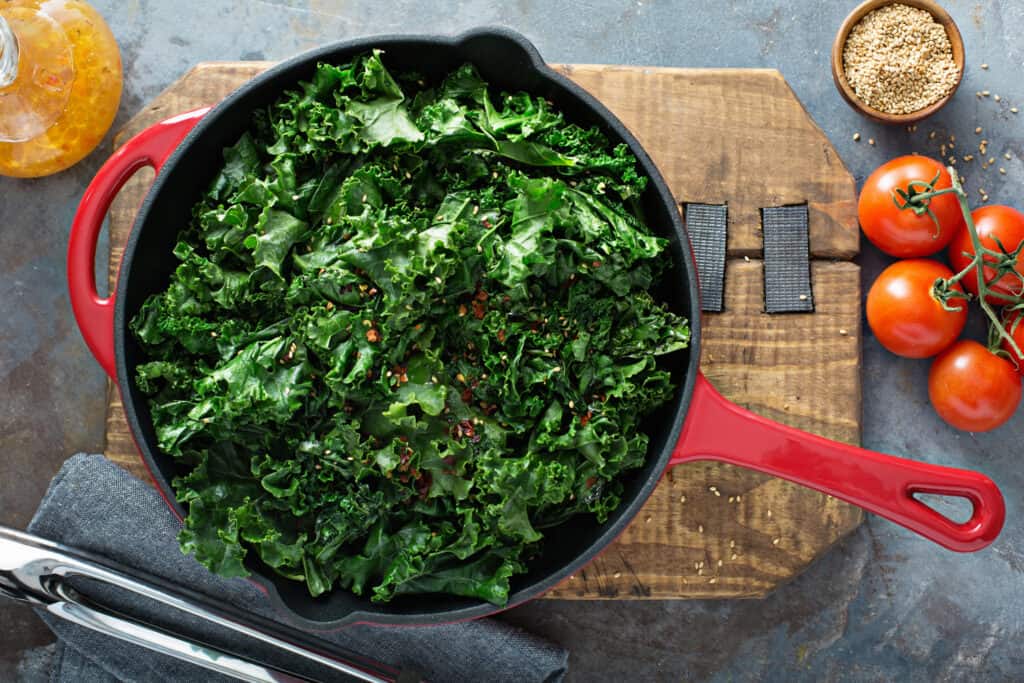
How to Store Kale
Kale stores best in the refrigerator for about a week. Keep it lightly moist and place it in an unsealed bag in the crisper bin. Since fresh kale doesn’t last very long, it’s better to simply harvest what you need by picking the outer leaves and leaving the rest of the plant for another time.
What Diseases and Pests to Watch For
There are a few pests to keep an eye out for including:
· Cutworms
· Cabbage Loopers
· Cabbageworms
· Harlequin Bugs (usually on older plants that haven’t been harvested)
· Grasshoppers
· Cabbage Aphids
These pests like to feast on the leaves. Kale is relatively good at resisting disease. Giving the plants the nutrients they need and discarding any weathered leaves will help reduce pests.
Placing row covers or wedding nets (tulle) over young seedlings will help to reduce pests. The pest population usually drops with cooler temperatures so the weather will also help to reduce pest infestation.
If pests become an issue, you can treat the plants with insecticidal soap or pick off the badly infested leaves and discard them.
Enjoy!
Kale is one of those foods that can be enjoyed in many different ways. You can add it raw to salads or use it as a bed for vegan or vegetarian dishes. It is also good in smoothies or omelets for breakfast. Finally, kale can be steamed, boiled, or baked and added to many amazing dinner dishes.
Kale is a very easy plant to grow, making it a perfect crop for beginner gardeners. And since it grows well in the ground, in raised beds, in containers, and in indoor hydroponic gardens, if you enjoy eating it, there’s really no reason not to grow it. You can grow it through several seasons and harvest just what you need, allowing the remaining plants to continue growing. This makes it easy to harvest and enjoy anytime you want. And since it’s full of healthy nutrients, it’s a great addition to your dinner table.
Find a sunny spot in your garden and get growing today!
